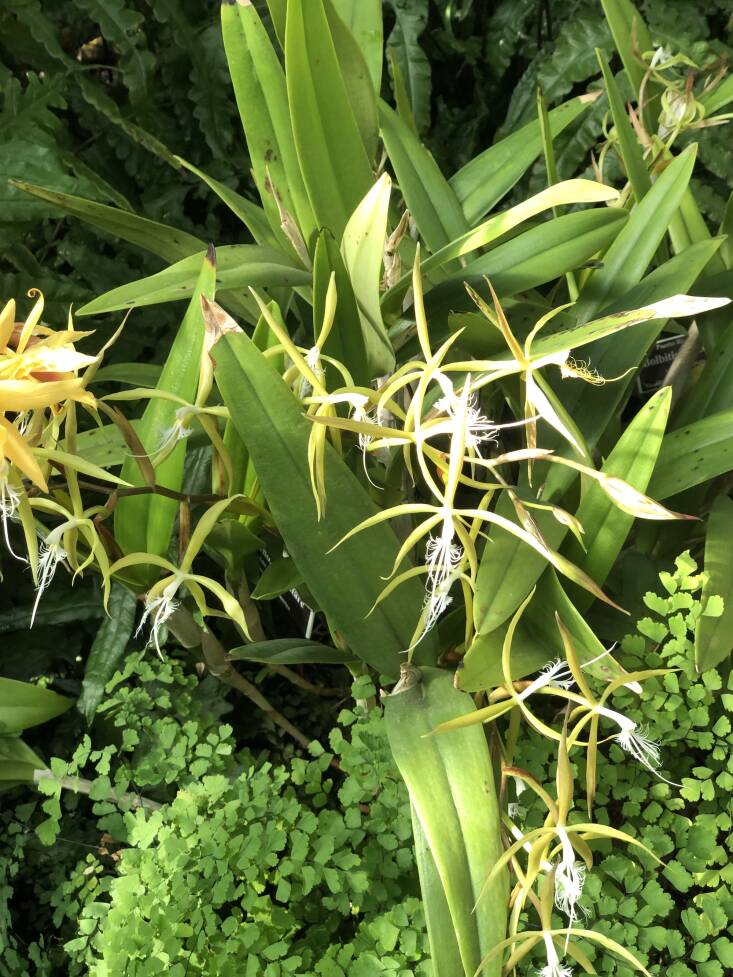As a child, Lily Kwong was fascinated by four scrolls that hung in her family’s living room. Depicting mountainous landscapes, they were a gift from her grandparents, who were from Shanghai. “I would stare for hours at these paintings and just get lost in the fantasy of them,” she recalls. “It was the first time I remember using my imagination.” The images made a lasting impression: When she was asked to be the guest designer—the first woman and first person of color—for the New York Botanical Garden’s 20th annual orchid show, she knew where look for a source of inspiration. “I just felt called to dig into those identity markers to explore them with curiosity and reverence,” she says.
Kwong and her team worked with the esteemed NYBG horticulture and exhibitions staff to create the extraordinary exhibit, called “Natural Heritage.” It showcases thousands of orchids—from the ubiquitous phalaenopsis to more uncommon species like Epidendrum ciliare, or the fringed star orchid. Kwong drew upon Chinese landscape philosophy, balancing yin and yang to recreate the mountains in her family’s scroll, “expressions of qi from the earth,” as she describes them. She covered large, smooth rocks with textured moss, festooning them with masses of fuchsia, yellow, orange, and white orchids.
If Kwong had to choose a favorite room, it might be the tranquil and contemplative walkway filled with white and pale-colored medicinal orchids like the dendrobium, first used as a treatment and tonic for longevity during the Han dynasty (202 BCE- 220 CE). This area is a tribute to her great-grandfather, who opened the Australia-Asia trade to Chinese herbs.
“One of the core principles of the Chinese landscape practice is the peaceful coexistence of humankind and nature, and, of course, we need that now more than ever,” Kwong says. “My prayer for this installation is that people will walk away inspired to mine their own heritage for a connection to the earth and the natural world,” she says. It seems her prayers will be answered: With a soundscape by composer Gary Gunn complementing the exhibit, the show is a feast for the eyes and the senses, as well as for the mind. One of the many informative signs scattered throughout the exhibition features a poem by Hua Mao, translated by Wendy Swartz. It encapsulated my emotions upon leaving the exhibit. It concludes, “There is joy, there is full feeling.”
The exhibition runs through April 23, 2023.
Photography courtesy of the New York Botanical Garden, unless otherwise indicated.







You can follow Kwong on Instagram @lily_kwong.
See also:
- Ask the Expert: How to Make An Orchid Bloom Again
- 10 Things Nobody Tells You About Orchids
- Orchids: Expert Advice from Susie Turner of Green Door Design












Have a Question or Comment About This Post?
Join the conversation